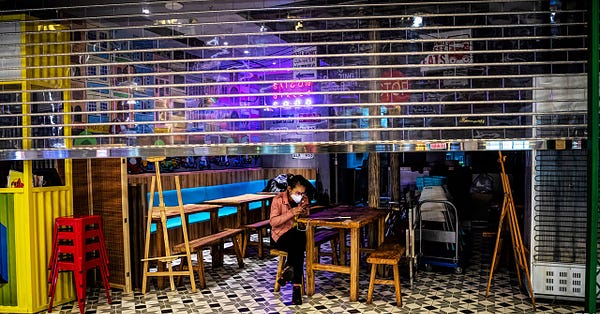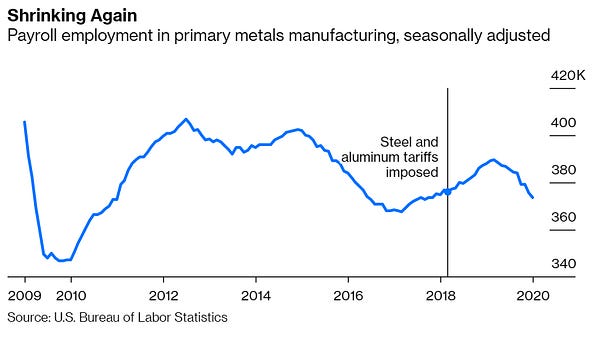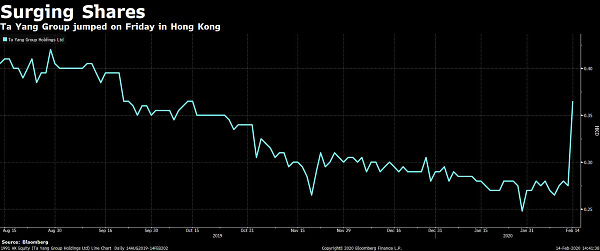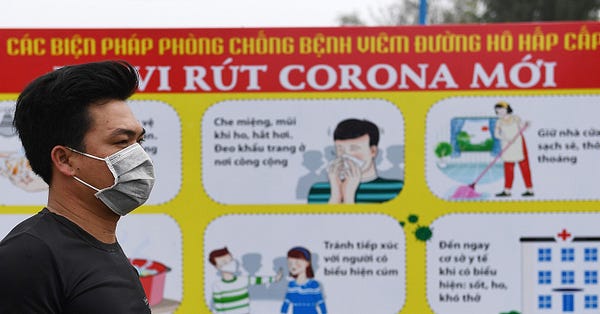Welcome to the 11th edition of Trade War. It’s one week after China officially reopened for business and while there are some signs of life, there are also numerous flashing warning lights for the Chinese economy its ability to trade as before with the world.
“The Chinese economy is the real concern”
Hao Hong, head of research at Bank of Communications International points out that \while people may be overly worried about the coronavirus (not sure I agree), they should be very concerned about the Chinese economy (100% agree).
“People are too pessimistic about the coronavirus. But the Chinese economy is the real concern,” he writes on twitter, posting a chart showing how China’s domestic airline capacity utilization has collapsed.


I’m staying home
Meanwhile, it’s not just travel by air in China. Travel by sea, road and rail also has been devastated by the virus, as this tweet by a Peking University professor shows.


Where are the workers?
You can’t do business without workers—that in part appears to be the dilemma facing China’s companies as they struggle to resume operations. That’s particularly true of those who rely on migrants, most of which are not yet returning to the cities to work, writes Stephanie Studer in the Economist.


“On the verge of death”
Migrants may in part be staying away as they fear no jobs will be awaiting them. China’s small businesses appear to be in serious trouble, with 30 percent planning job cuts and one-tenth, “on the verge of death,” reports the South China Morning Post.


“Eviction measures includes water & power stoppage”
Making matters worse, those migrants who might consider returning, are finding they are not welcome and indeed are being forced out of neighborhoods in many cities, even when that’s where they had previously been living.


“An inherent tension”
Simon Rabinovitch who is consistently very good on calling China’s economy, makes a key point in the Economist: there is a tradeoff between continuing to aggressively curb the virus spread and getting China’s economy back on an even keel.
In short, there is no way for the economy to grow as long as cities are quarantined, roads blocked, and very importantly, people stay home, effectively withdrawing from most economic life.


Lockdowns
Beyond Hubei's Wuhan, center of the coronavirus, other cities continue to clamp down on their populations. That’s happening in Huanggang, some 30 miles east of the provincial capital.


And quarantines
Even as the central government in Beijing pushes for companies to reopen and business to restart, the city has just announced that there will be a 14 day-quarantine for returnees to the capital—hardly a move designed to facilitate easy operation.

There go the barrels
Goldman Sachs predicts that China’s oil demand will fall by around four million barrels a day, because of the coronavirus.


Meanwhile, back in the U.S.A.
Last year was tough on state economies due to the trade war—now they have the coronavirus affecting business. “Exporters from most U.S. states experienced dismal sales to China last year as tariffs slammed products ranging from wheat and whiskey to ginseng and gas,” reports Bloomberg News. With the virus, expect the pain to continue, “phase one” deal or not.
Anybody home?
The USTR announces a hotline for resolving disputes related to the “phase one” deal—and no one answers the phone….


Tariffs? Who said tariffs?
U.S. VP Mike Pence avoids the word tariffs in a 45-minute long speech to the manufacturing association on February 14.

“Cascading protection”
Economists call a second set of tariffs on top of previous tariffs, for products earlier hurt by duties, “cascading tariffs.” That’s what steel and aluminum products are now experiencing, according to the Peterson Institute. “Trump [admitted] these new tariffs are to help an industry suffering because of his previous tariffs,” writes the Peterson Institute.


Tariffs and U.S. jobs
And perhaps not coming as a surprise: it turns out tariffs don’t always protect jobs, at least in the steel and metals industry, points out this Bloomberg Opinion piece.


Notable/In Depth
Look what happens if you say you can make masks. Your stock goes WAY up.


Good thread of video clips showing how a popular Beijing shopping mall is still deserted, even as officially China reopens for business.
China-dependent Southeast Asian economies are suffering, as Trinh Nguyen of the Carnegie Endowment explains in this piece.


Nice informative story from Bloomberg New’s Peter Martin about the former Shanghai mayor now being sent to Hubei to do crisis control. He’s a Xi guy, surprise, surprise…





